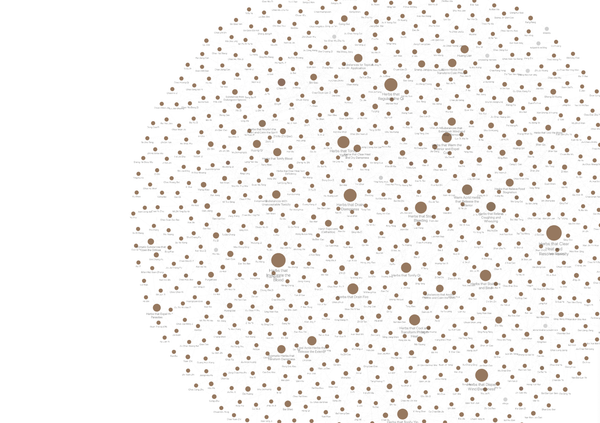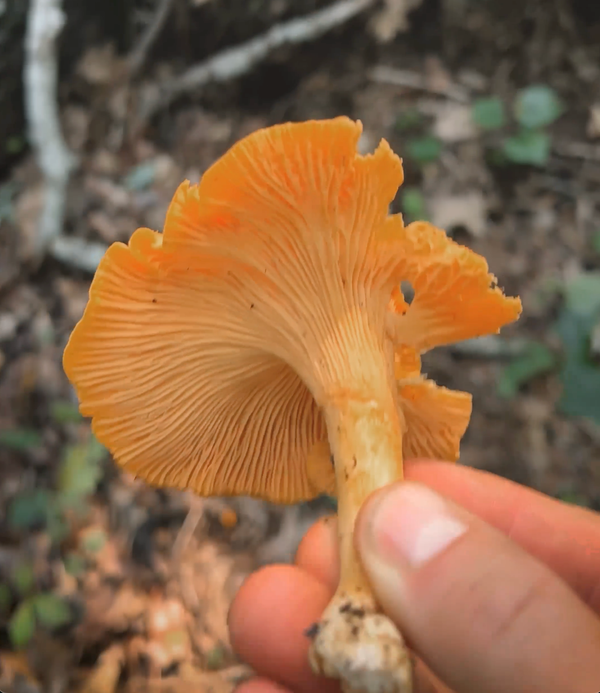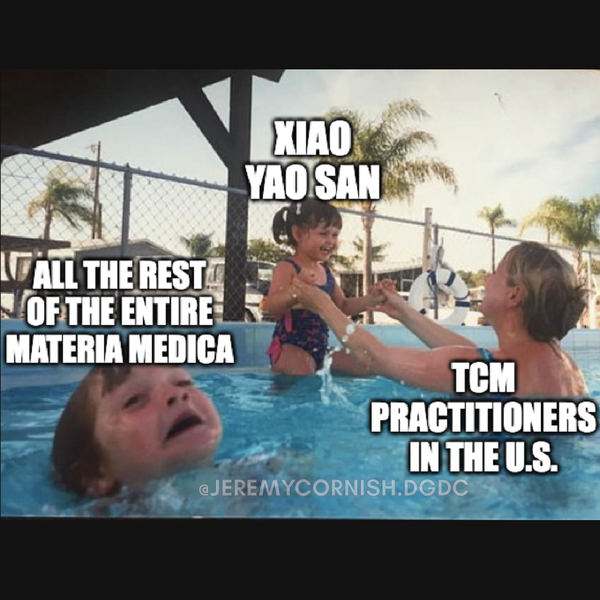Breaking up with Gui Pi Tang?

The Breakup Series: Gui Pi Tang and alternatives
Ah, Gui Pi Tang. You had us at “Heart + Spleen.” You wine us, you dine us, and then what? For some, it’s a prelude to a steamy, passionate love affair. But for others, you ghost them before the check even arrives at the table. What’s up with that?
There’s been some version of Gui Pi Tang around for several centuries but the formula we use today didn’t get standardized until around 1500 in the Ming dynasty.
It’s a modification of the combination of Si Jun Zi Tang and Dang Gui Bu Xue Tang:
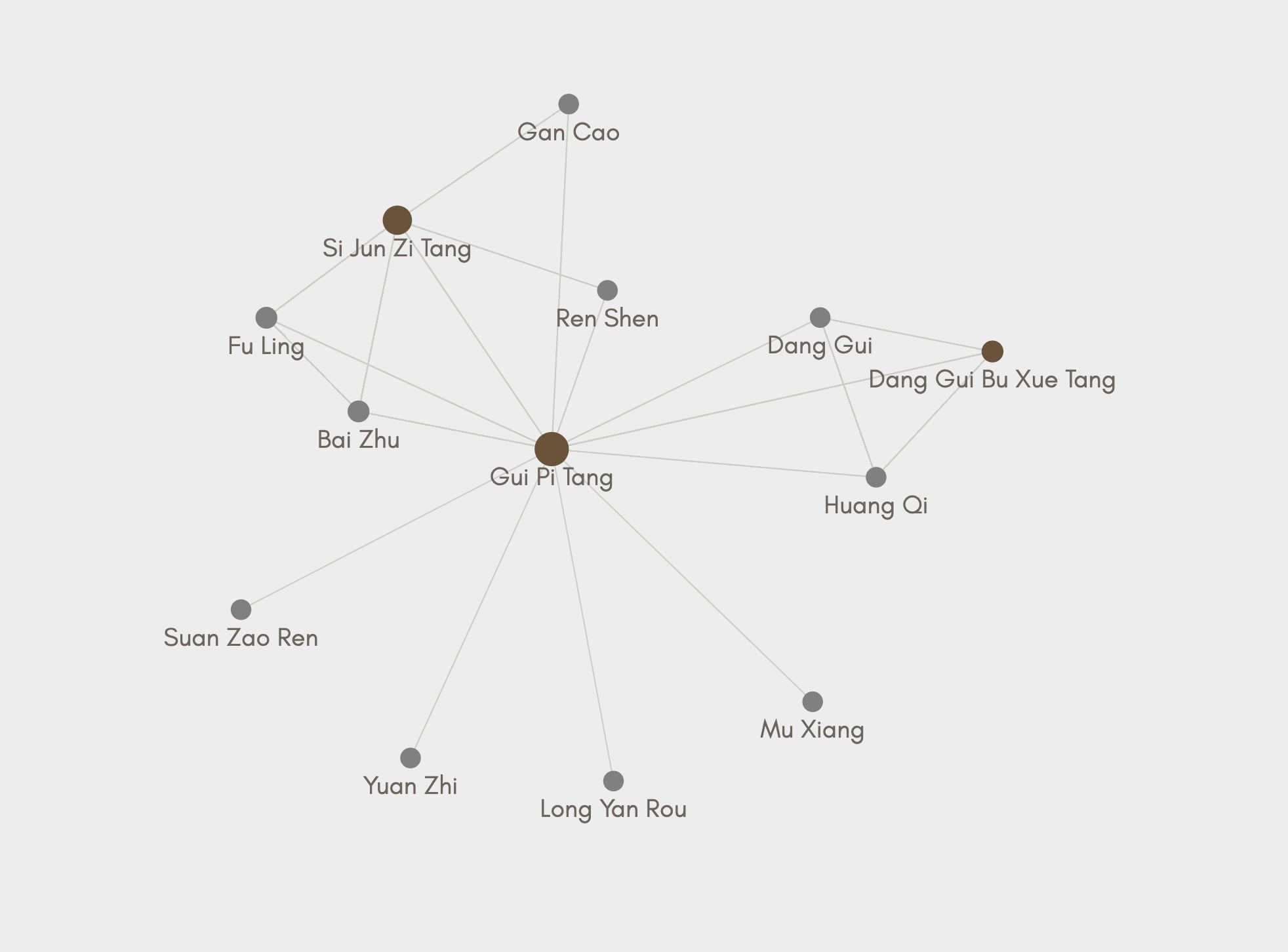
The pattern it treats is Spleen Qi and Heart Blood deficiency. This is typically due to overthinking and excessive worrying. It isn’t called “the student formula” for nothing!
Gui Pi Tang really has a primary focus on the Spleen. The Heart is secondary.
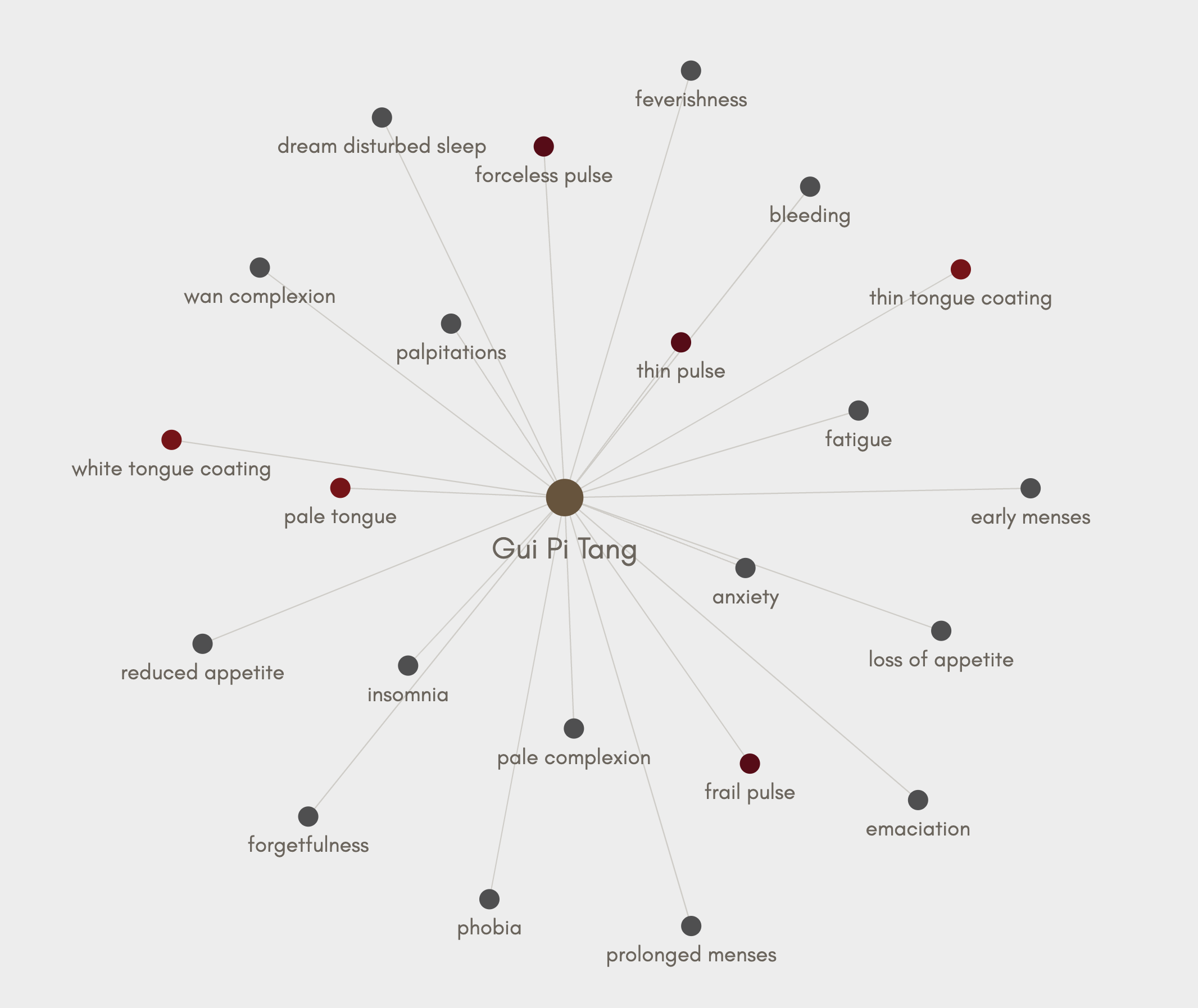
Gui Pi Tang indications
We know Gui Pi Tang treats forgetfulness and insomnia. Looking at the indications graph above, we also see it addresses:
- fatigue
- reduced or loss of appetite
- bleeding
These are symptoms indicating Spleen Qi deficiency.
The Heart blood deficiency aspect shows up with psycho-emotional indications such as:
- phobia
- anxiety
- dream disturbed sleep
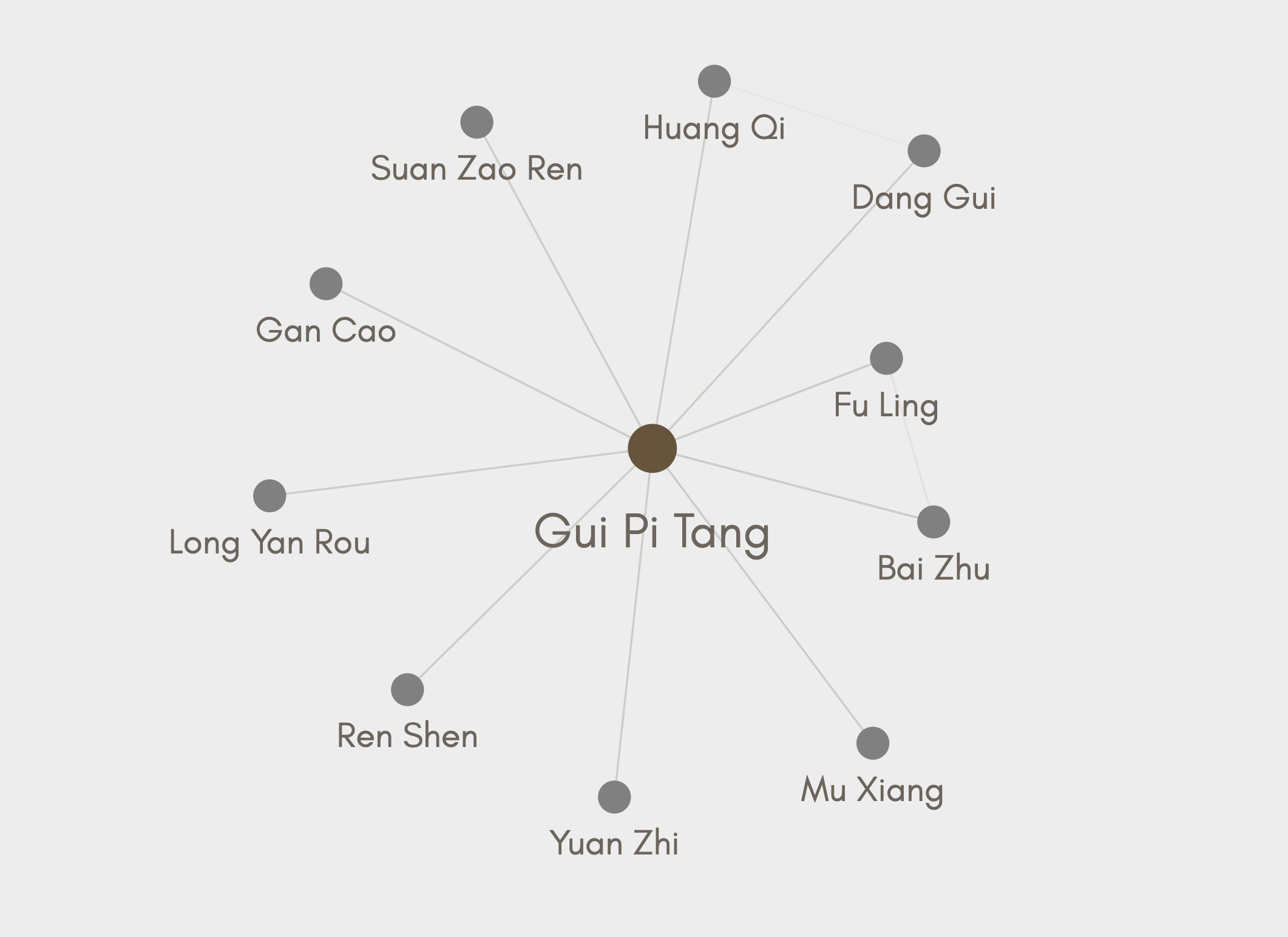
Gui Pi Tang ingredients
As we can see, Gui Pi Tang contains the formula Si Jun Zi Tang (Ren Shen, Bai Zhu, Fu Ling, and Zhi Gan Cao) which tonifies Spleen qi. It also contains Dang Gui Bu Xue Tang (Huang Qi and Dang Gui) which is tonifying Spleen qi in order to generate blood.
In addition, Gui Pi Tang uses Long Yan Rou to tonify blood because it targets the Heart and Spleen and Calms the Shen.
Yuan Zhi and Suan Zao Ren are Nourish Heart, Calm Shen category herbs that are added to further support the Heart.
Finally, Mu Xiang is added to:
- help avoid stagnation due to the cloying herbs in the formula
- strengthen the Spleen
- eliminate food stagnation that might be present due to a weak Spleen
What isn’t commonly known is that historically Sheng Jiang and Da Zao were added to the decoction to help harmonize the formula and help assimilate it to your body.
So, what might hamper Gui Pi Tang’s effectiveness?
The formula targets both the Spleen and the Heart. Its main emphasis is on treating Spleen qi deficiency which may be caused by mental taxation. While your patient may have a deficient Spleen, are they also Blood deficient? Because that’s a key part of the pattern.
What’s their lifestyle like? If they’re not a student, are they still spending their day sitting and focusing nonstop on work? Do they end the day by picking up take out and eating dinner while lounging on the couch watching Netflix?
While Gui Pi Tang can technically treat dampness, your patient may have predominant dampness and phlegm. The formula would need to be modified.
Or maybe it turns out there’s a different pattern at play. You might need to use a different formula altogether. We’re going to look at some alternatives.
Next up: the quiet boy (or girl) next door, Ren Shen Yang Rong Tang...
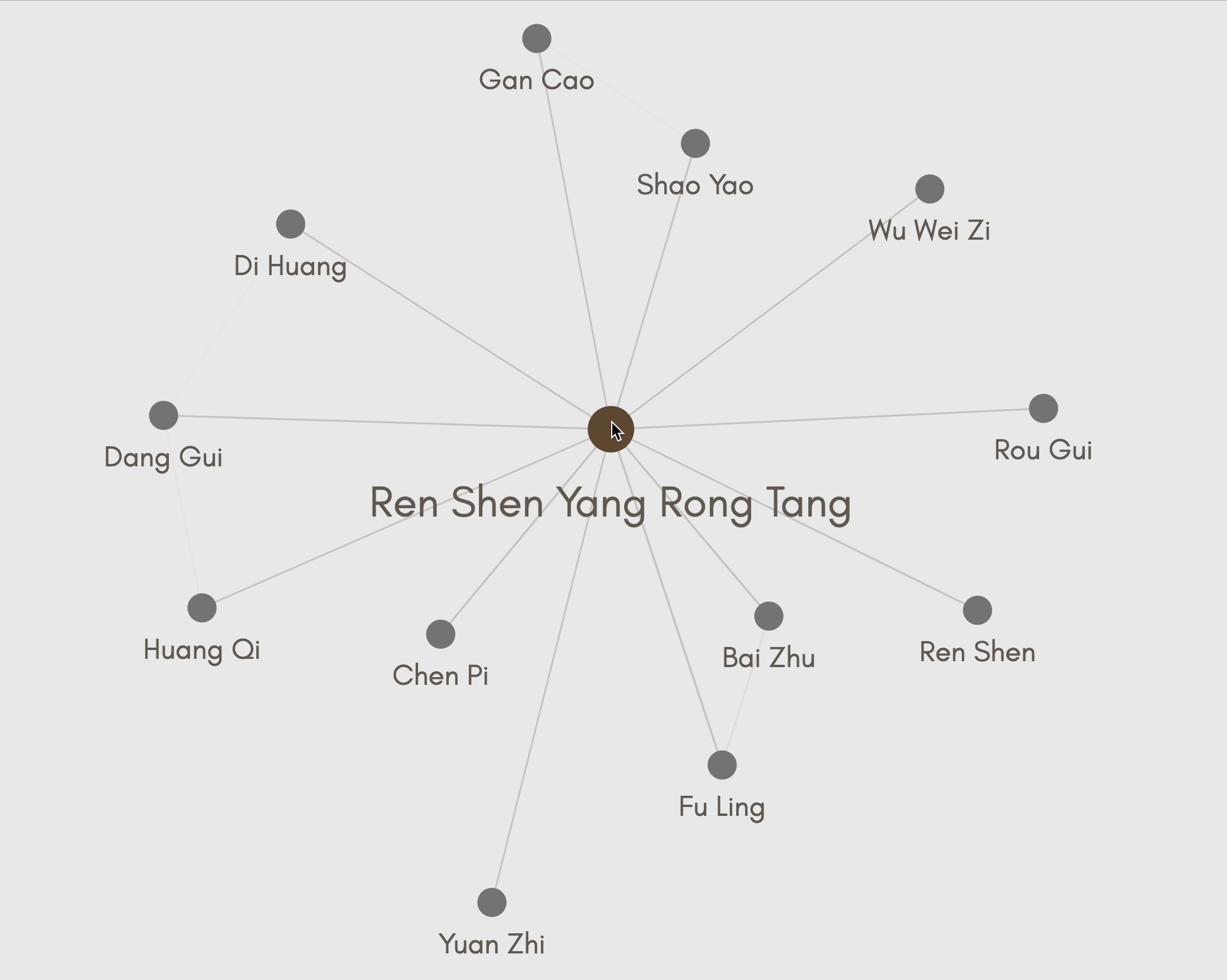
Ren Shen Yang Rong Tang
It wouldn’t be surprising if Ren Shen Yang Rong Tang is suffering from middle child syndrome. Tucked between Shi Quan Da Bu Tang and Gui Pi Tang in the Qi and Blood Deficiency section of the Tonify chapter, it’s often overlooked and overshadowed by its two better known siblings. But who wouldn’t want to check out a formula with the phrase “Nourish Luxuriance” in its name? Sounds like a promising date!
Ren Shen Yang Rong Tang, also known as Ren Shen Yang Ying Tang, has been around since the mid-1100s. Like Gui Pi Tang, it:
- tonifies Qi and Blood
- nourishes the heart
- calms the Shen
- targets the Heart and Spleen.
The pattern this formula treats is Heart and Spleen Qi and Blood deficiency with internal heat and dryness. This is usually due to accumulated damage from overexertion. Historically, it was used to treat chronic consumption. It’s a very good formula for tonifying deficient patients.
Let’s take a look at how their indications are the same and different.
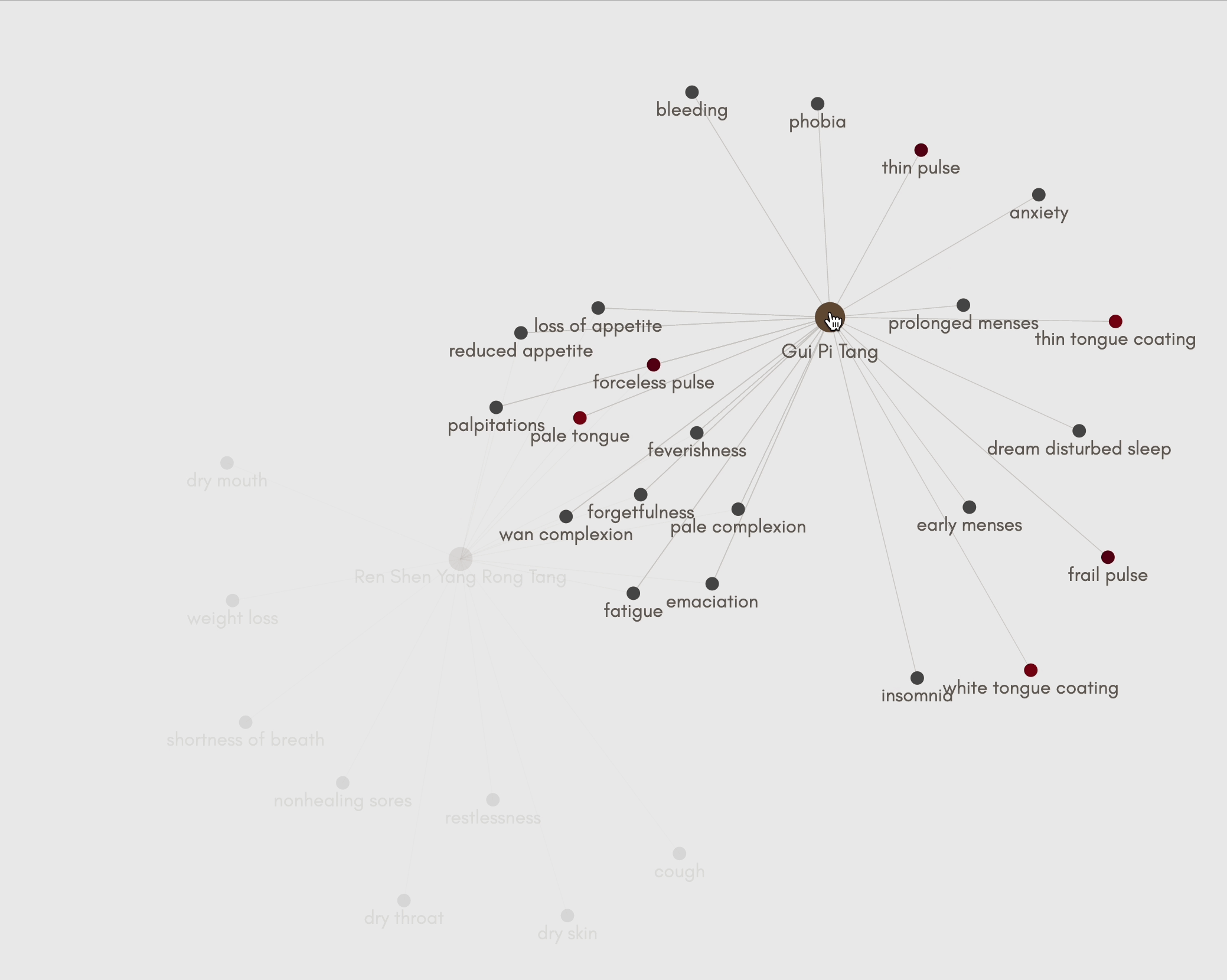
Indications
It’s not surprising the formulas have indications in common: loss of appetite, reduced appetite, fatigue, forgetfulness, palpitations, a wan or pale complexion, possible feverishness, forceless pulse, pale tongue.
But how are they different?
Gui Pi Tang’s primary focus is on the Spleen. The Heart is secondary. So, we see early menses, bleeding, and prolonged menses indicating Spleen qi deficiency. The formula also has a strong psycho-emotional component with phobia, anxiety, dream disturbed sleep, and insomnia.
Ren Shen Yang Rong Tang has restlessness, which could occur at night, and nonhealing sores. Then there’s shortness of breath, dry mouth, cough, dry skin, dry throat. This is a Lung component with dryness and possible heat that you don’t see in Gui Pi Tang.
Let’s see the herbs they use to treat their patterns.
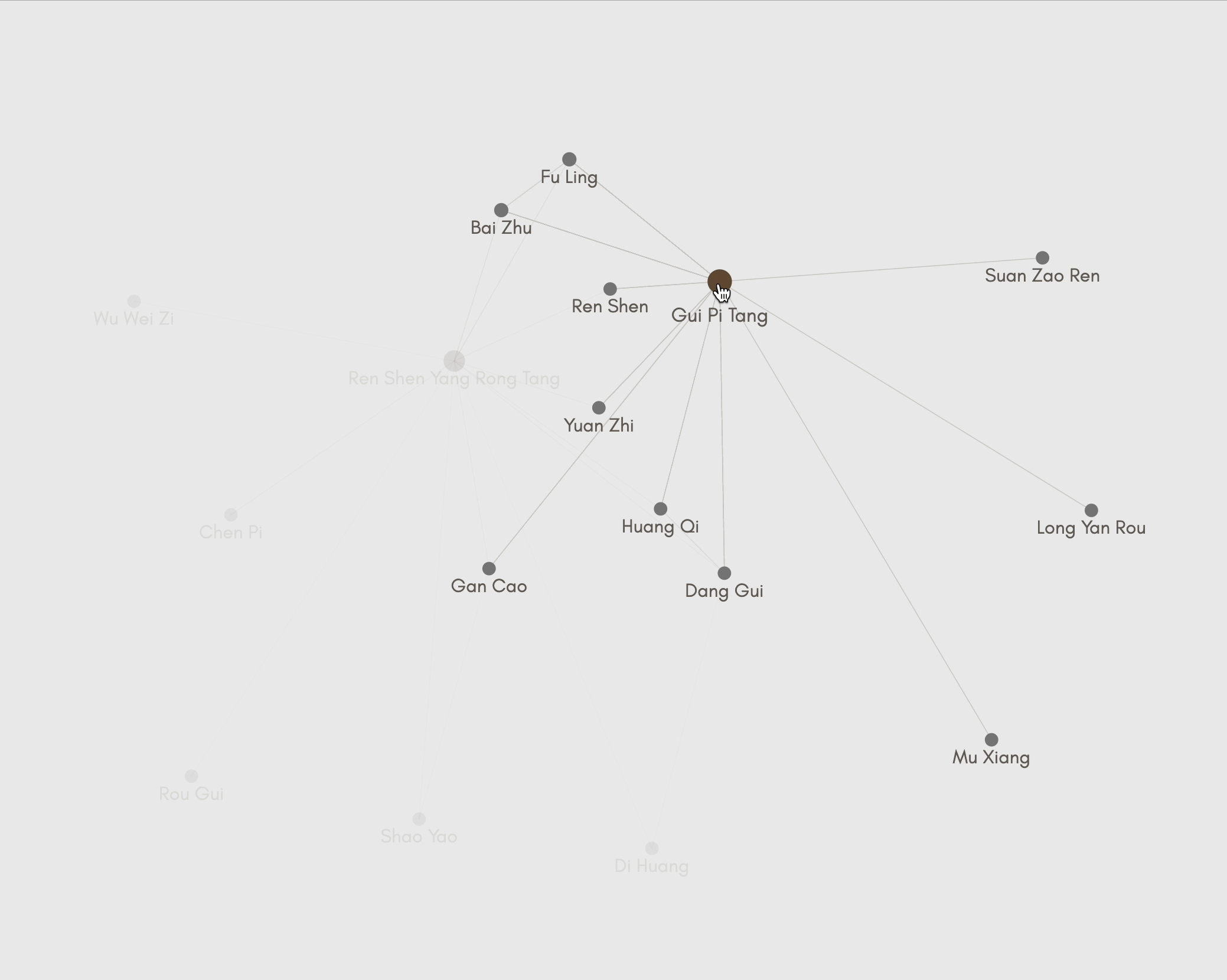
Herbs
What’s interesting is both formulas have the same basic architecture and therefore have many herbs in common.
They use Si Jun Zi Tang to tonify Spleen Qi (Ren Shen, Bai Zhu, Fu Ling/Fu Shen and Zhi Gan Cao). Huang Qi is added as part of Dang Gui Bu Xue Tang.
Next, they tonify the Blood. This includes Dang Gui as the other half of DGBXT.
But then these two formulas take distinctly different approaches.
Gui Pi Tang uses Long Yan Rou because it targets the Heart and Spleen and calms the Shen.
Ren Shen Yang Rong Tang contains ¾ of Si Wu Tang. In addition to Dang Gui, it also uses Shu Di Huang and (Bai) Shao Yao.
This provides an additional yin nourishing and enriching component which is needed for the dryness that can be a part of its pattern.
To nourish the Heart and calm the Shen, both formulas include Yuan Zhi. Then they add an additional herb to:
- help tonify yin
- calm the Shen
- stop sweating.
Gui Pi Tang accomplishes this with Suan Zao Ren. It’s tonifying Heart yin but it’s also tonifying the Liver in order to support the Heart.
Ren Shen Yang Rong Tang uses Wu Wei Zi instead, which can help restrain Heart qi and calm the Shen. It also has a fluid generating component and targets the Lung.
Both formulas contain a Qi regulator to help avoid stagnation due to the tonifying herbs, but once again, they take a different approach.
Mu Xiang is used in Gui Pi Tang which makes sense. It’s focusing on strengthening the Spleen and eliminating any possible food stagnation that might be present due to having a weak functioning organ.
Chen Pi is the herb of choice in Ren Shen Yang Rong Tang. It can help with phlegm that occurs with the cough. It also enters the Lung in addition to the Spleen.
Historically, both formulas would add Sheng Jiang and Da Zao when making a decoction to help harmonize and assimilate the formula to your body.
There’s one extra herb in Ren Shen Yang Rong Tang that isn’t matched in Gui Pi Tang: Rou Gui.
Cinnamon bark brings the ability to tonify Yang and warm Yang Qi to stimulate the physiological activity in the body.
GPT vs. RSYRT Summary
Quick recap. Both of these herbal formulas:
- target the Spleen and Heart
- tonify Qi and Blood
- help calm the Shen.
Gui Pi Tang would be used when you have mental taxation, a psycho-emotional component, and a weaker Spleen.
Ren Shen Yang Rong Tang is for physical taxation with dryness and possibly heat that affects the Lung.
So that was the formula hanging out next door. Now let’s look down the street for another alternative to Gui Pi Tang: Ding Zhi Wan...
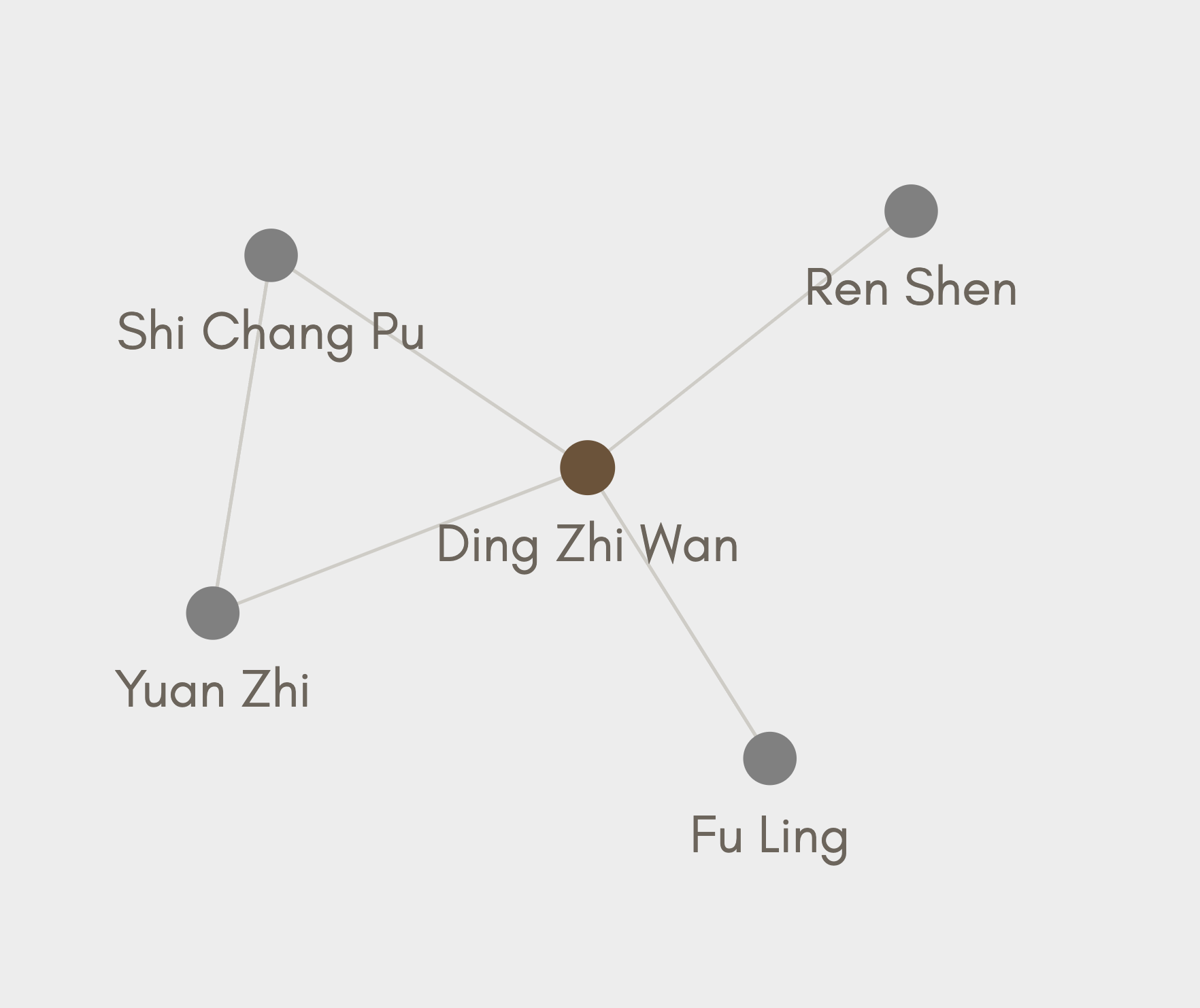
Ding Zhi Wan
We’re going to venture out of the Tonify chapter and head on down to Formulas that Nourish the Heart and Calm the Spirit. Here we find Ding Zhi Wan. Although it’s attributed to Sun Si-Miao in the year 650, it’s actually based on an earlier, similar formula.
In contemporary practice, Ding Zhi Wan is often used to treat anxiety and insomnia caused by Gallbladder and Heart deficiency. However, the original pattern it was created for was Heart Qi deficiency and constraint caused by phlegm turbidity.
At the root, there is Qi deficiency. Ding Zhi Wan tonifies and moves Heart Qi while eliminating dampness and transforming phlegm. Hmm, sounds like Heart + Spleen, doesn’t it?
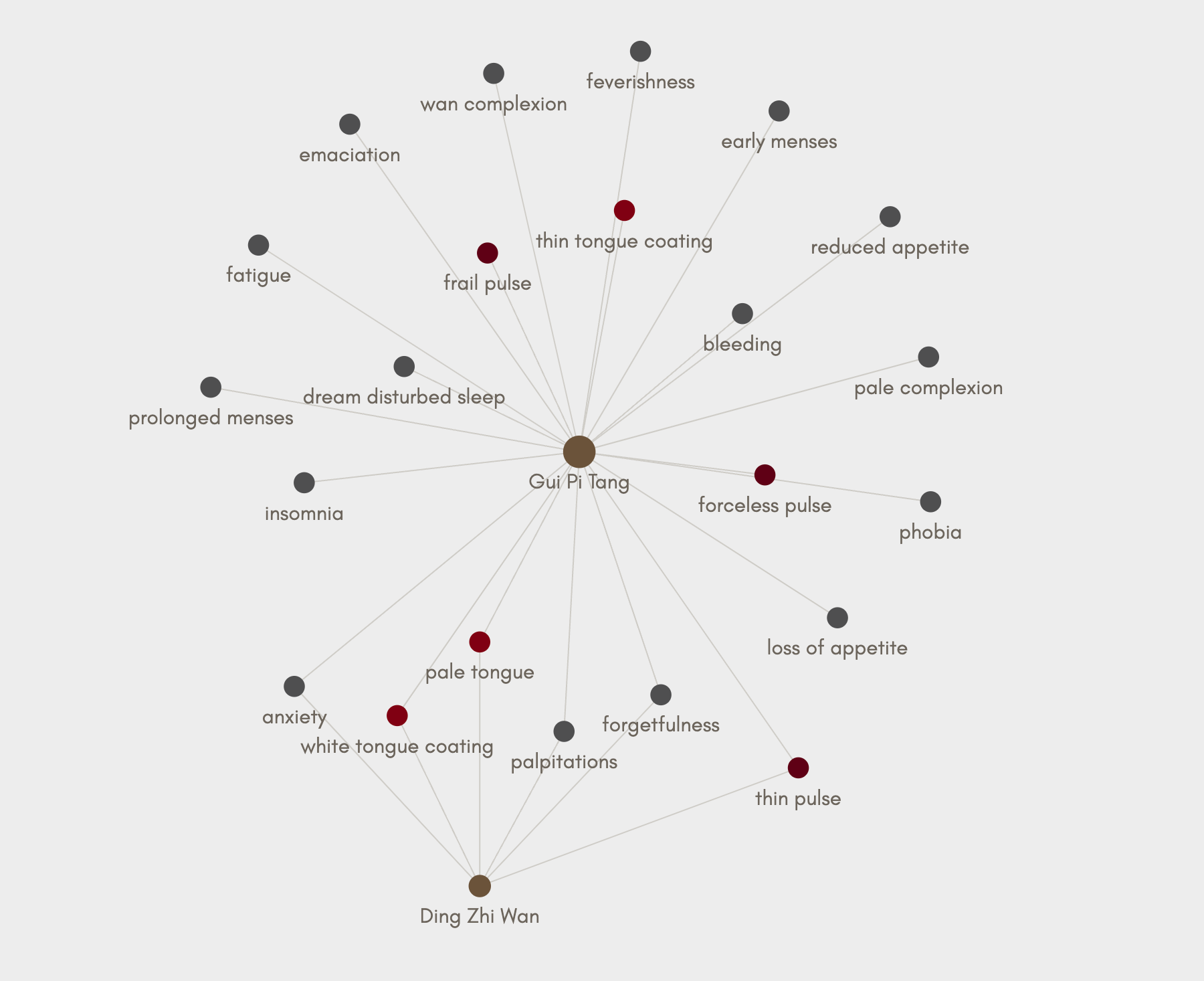
Indications
Both Ding Zhi Wan and Gui Pi Tang treat anxiety, palpitation, and forgetfulness. If you look closely, you’ll see they both address sleep problems, too. The patient may have a thin pulse and a pale tongue with a thin white coating.
We already know that Gui Pi Tang is used when you have mental taxation, a psycho-emotional component, and a weaker Spleen.
Ding Zhi Wan is different in that mental taxation isn’t the cause for the psycho-emotional problems. It’s phlegm turbidity obstructing the heart. This leads to feeling anxious or fearful about the future, having a difficult time coping with change, and an inability to concentrate or focus, which leads to forgetfulness. In severe cases, when the Heart can’t direct fire downwards, there may be incessant laughter and giddiness.
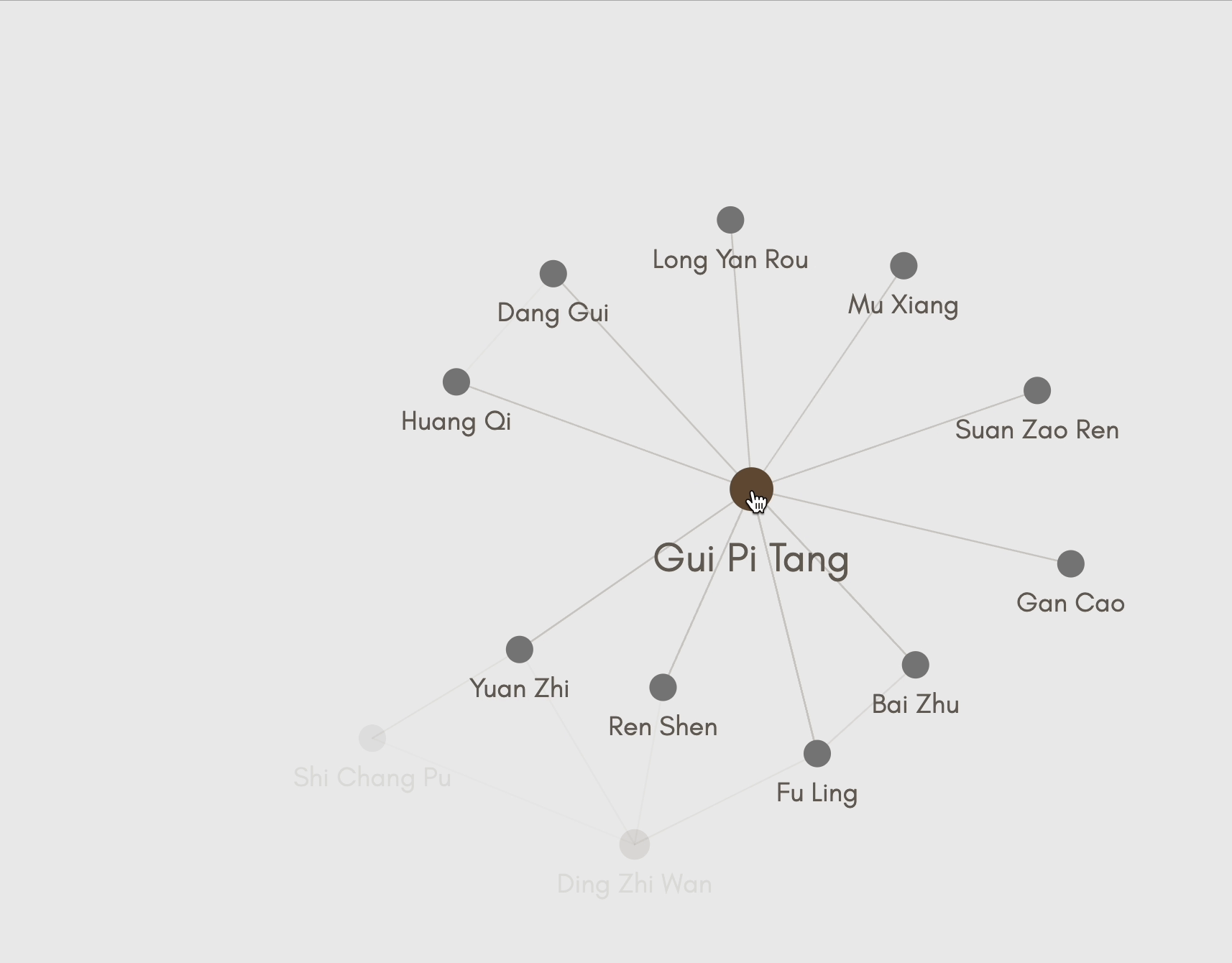
Herbs
It’s interesting to see that ¾ of Ding Zhi Wan herbs are already found in Gui Pi Tang. You could almost call it “Gui Pi Tang Lite + phlegm.”
In Ding Zhi Wan, Ren Shen and Fu Ling are being used to tonify Heart Qi, calm the Shen, and eliminate dampness while protecting physiological fluids. The standard formula uses a higher amount of Ren Shen (9g) than Gui Pi Tang (3-6g).
The amount of Fu Ling (9g) in Ding Zhi Wan is similar to the lower range found in Gui Pi Tang (9-12g). The latter formula often uses Fu Shen to more strongly calm the Shen. Given the need to drain dampness and transform phlegm, this substitution isn’t recommended for Ding Zhi Wan.
Both formulas use a form of Yuan Zhi to facilitate the flow of Heart qi. In Ding Zhi Wan, this is combined with Shi Chang Pu. These two herbs are often dui yao paired to treat phlegm obstructing Heart Qi transformation. Their acridity disperses constraint. The bitter quality transforms phlegm and opens the orifices.
DZW vs. GPT Summary
Both formulas treat the Heart and Spleen. So, what’s the difference? In addition to treating deficient Qi, Gui Pi Tang also addresses Blood deficiency.
Blood deficiency isn’t talked about with Ding Zhi Wan. Turbid phlegm is. Where’s this turbid phlegm coming from? Could be a combination of the modern lifestyle and diet. After all, you can’t get to Valentine’s Day without going through Super Bowl Sunday. Quick, what are the most popular food and drink commercials during that event? I don’t think they’re for warm soups and congees.
We’ve covered formulas for Qi deficiency accompanied by Blood deficiency, Yin deficiency, or turbid phlegm. Let’s see if we can find one more alternative formula...
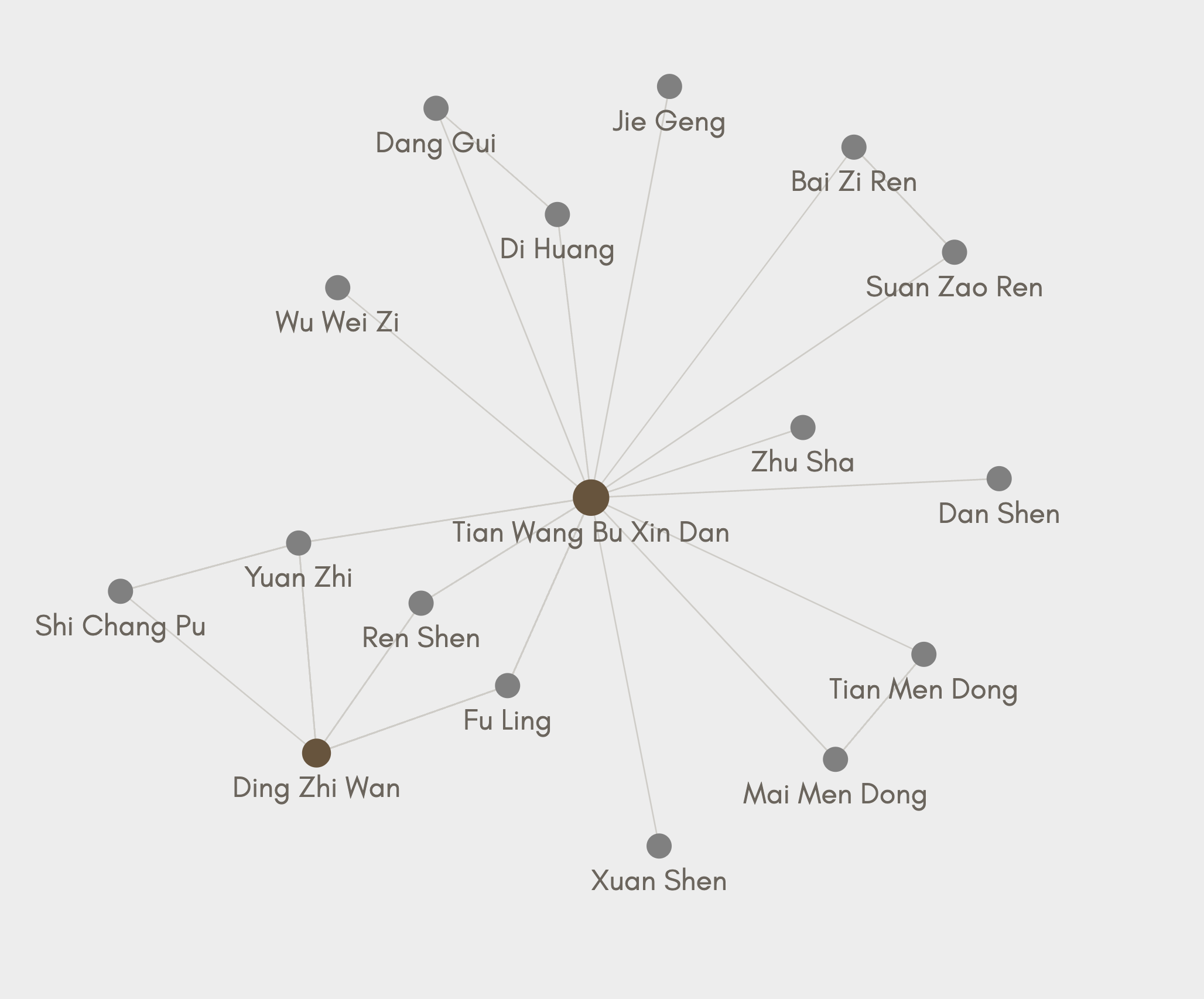
Tian Wang Bu Xin Dan
It’s said Tian Wang Bu Xin Dan was first revealed to a Buddhist monk. Whether that was Zhi Gong or Dao Xuan is up for debate. We do know it was originally designated for women.
The pattern it treats is Yin and Blood deficiency leading to a restless state of mind. Or, to put it differently, the Heart and Kidney aren’t communicating well. Oh yes, failure to communicate. This formula needs to be in a breakup series.
The Chinese physician Wang An recommended Tian Wang Bu Xin Dan be taken regularly by people who read or study a lot. Sounds like a certain “student formula” we’ve already discussed.
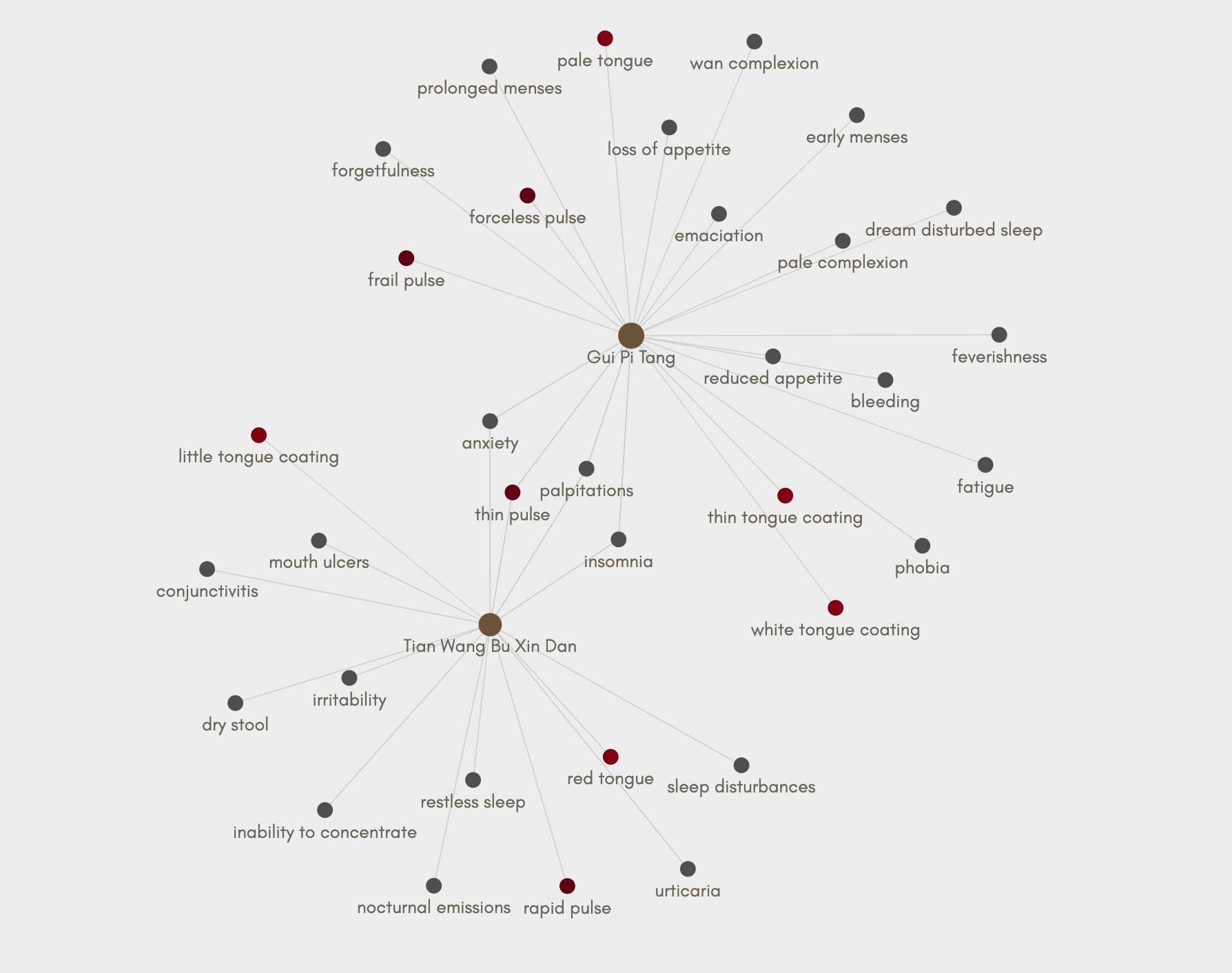
Indications
Tian Wang Bu Xin Dan and Gui Pi Tang share the indications of:
- thin pulse
- anxiety
- palpitations
- insomnia with disturbed sleep
In terms of cognitive function Tian Wang Bu Xin Dan lists an inability to concentrate, whereas the Gui Pi Tang lists forgetfulness.
Both formulas deal with overthinking and worrying. Gui Pi Tang is more for thoughts that keep running around in your mind, so it’s hard to get started or take action. With Tian Wang Bu Xin Dan, getting started isn’t the problem. Due to agitation, there might actually be a lot of activity. Completing what you’ve started is the challenge.
Gui Pi Tang has signs of Spleen Qi deficiency that aren’t present in Tian Wang Bu Xin Dan.
We can see Tian Wang Bu Xin Dan as being one step beyond Gui Pi Tang.
The Blood is deficient, and so is the Yin. This puts the Yang out of balance and control, so heat harasses the Heart. Thus, a red tongue with little coat, a rapid pulse, possible mouth ulcers, irritability, and dry stools.
While this looks like a different presentation, what if your patient is borderline? Just rounding the bend? According to Scheid et al. in Formula & Strategies, some patients with Blood and Yin deficiency also have loose stools. It might not be that cut and dry.
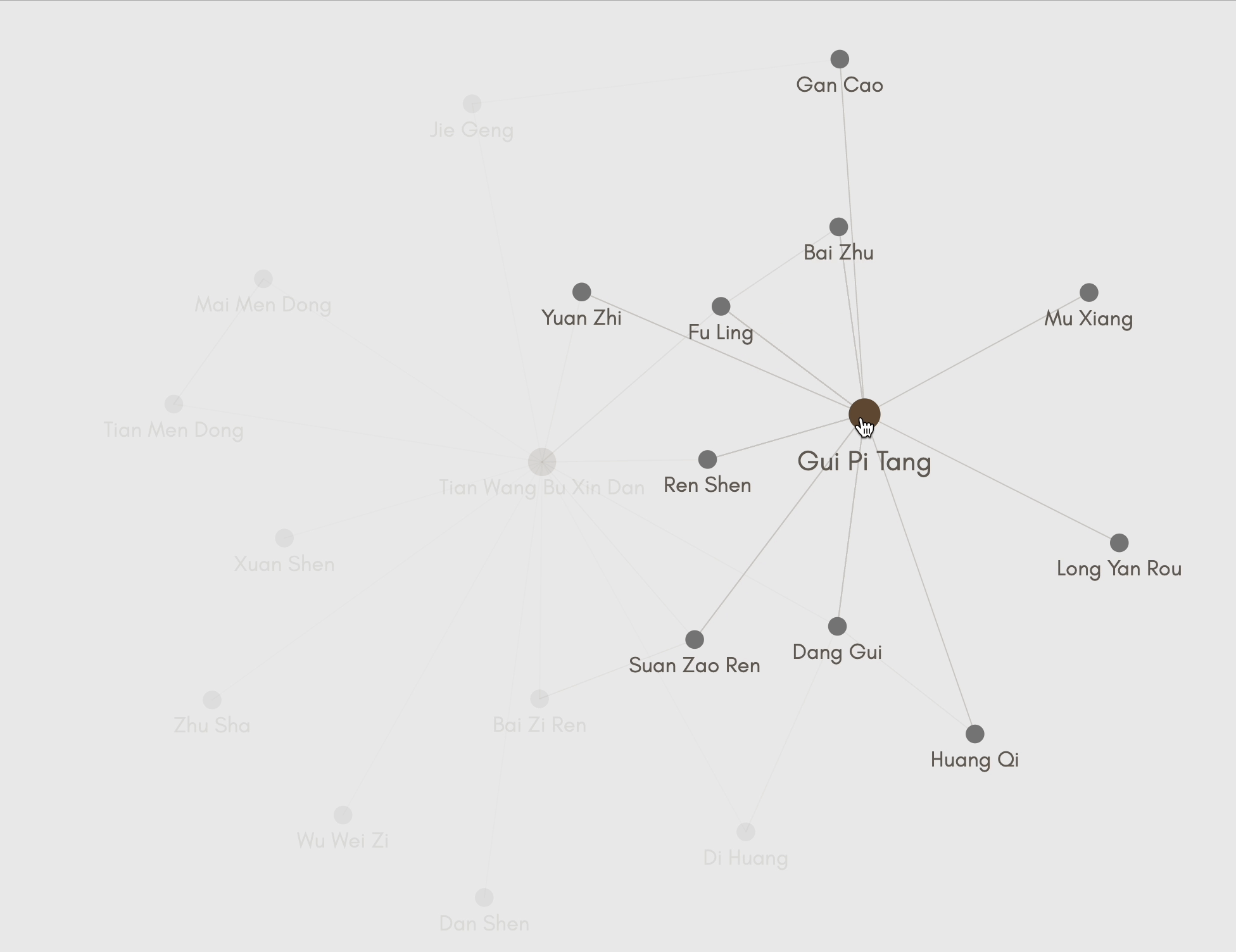
Herbs
Half of Gui Pi Tang’s herbs are in Tian Wang Bu Xin Dan. This includes two Qi tonifying herbs (Ren Shen and Fu Ling), two herbs that nourish the Heart and calm the Shen (Suan Zao Ren and Yuan Zhi), and one herb to tonify and move blood (Dang Gui).
Eight additional herbs round out the formula. (Zhu Sha is omitted from this discussion since it’s no longer used.) Sheng di Huang, Tian Men Dong, Mai Men Dong, and Xuan Shen are all nourishing Yin, clearing heat, and helping calm the Shen.
Dan Shen pairs with Dang Gui in nourishing the Blood and preventing stasis.
Bai Zi Ren joins Yuan Zhi to calm the Shen.
Together, Wu Wei Zi and Suan Zao Ren astringe Heart qi and yin fluids.
Jie Geng serves as an envoy conducting the formula’s actions to the upper burner.
You might have noticed there’s one other category of herbs in Gui Pi Tang that doesn’t appear here. There isn’t a Qi regulator like Mu Xiang. In fact, due to the cold, rich nature of Tian Wang Bu Xin Dan, it is cautioned for use in people with Spleen/Stomach deficiency.
There you have it. Three possible alternatives for Gui Pi Tang.
We’re not suggesting you break up a relationship when you’ve got a good thing going. After all, when Gui Pi Tang works, it’s a match made in heaven. There’s a reason it’s stuck around for centuries.
However, if you’re starting to have doubts, you might want to take a look at Ren Shen Yang Rong Tang, Ding Zhi Wan, or Tian Wang Bu Xin Dan. One of them could be just what your patient needs...
~ Dr. Susan D. West, DACM

